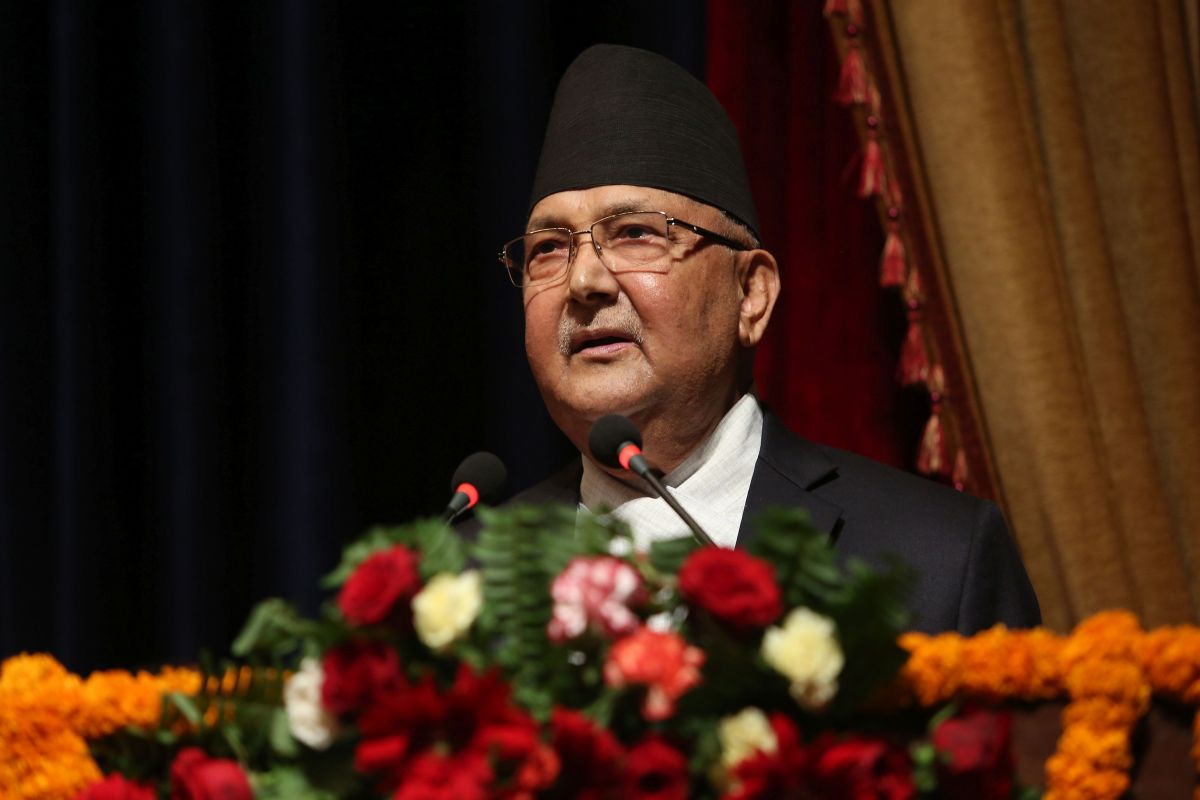Nepal Policy
India’s relationship with Nepal has always been complex, shaped by historical, cultural, and geographical factors.
‘The Prime Minister’s remarks that India was conspiring to remove him was neither politically correct, nor diplomatically appropriate,’ former prime minister ‘Prachand’ said.

Nepal Prime Minister K.P. Oli (File Photo: IANS)
Nepal Prime Minister KP Sharma Oli’s recent remarks that efforts are being made to oust him after his government redrew Nepal’s political map has backfired, with top leaders of the ruling Nepal Communist Party demanding his resignation on Tuesday.
Former prime minister Pushpa Kamal Dahal “Prachanda” slammed KP Oli for the remarks he made on Sunday, as soon as the powerful Standing Committee meeting of the ruling party started at the PM’s official residence at Baluwatar on Tuesday.
Advertisement
“The Prime Minister’s remarks that India was conspiring to remove him was neither politically correct, nor diplomatically appropriate,” he said.
Advertisement
“Such a statement by the Prime Minister may damage our relations with the neighbour,” Dahal warned.
Prime Minister KP Oli on Sunday had said that there have been various kinds of activities in the “embassies and hotels” to remove him from power. He said some Nepalese leaders were also involved in the game.
“It was not appropriate for the prime minister to accuse the southern neighbour and leaders of his own party,” a senior leader of the party quoted Prachanda as saying during the meeting.
Besides top leader Prachanda, senior leaders Madhav Kumar Nepal, Jhalanath Khanal, Vice Chairman Bamdev Gautam and spokesperson Narayankaji Shrestha also asked Prime Minister Oli to provide evidence of his accusations and asked him to quit, he said.
They said the prime minister should resign on moral grounds after making such “undiplomatic and nonpolitical remarks.” However, KP Oli, who was also present at the meeting, did not make any comments.
Prachanda has time and again spoken about the lack of coordination between the government and the party and emphasised on a ‘one man one position’ system to be followed by the Nepal Communist Party.
This is not the first time that the senior leaders asked Prime Minister KP Oli to resign from his post. In April too, KP Oli was asked to resign from his post.
Nepal’s National Assembly on June 18 unanimously passed the Constitution Amendment Bill to update the country’s political and administrative map incorporating three Indian territories.
India had termed as untenable the “artificial enlargement” of territorial claims by Nepal after its lower house of parliament on Saturday unanimously approved the new political map of the country featuring areas which India maintains belong to it.
The National Assembly, or the upper house of the Nepalese parliament, unanimously passed the constitution amendment bill providing for inclusion of the country’s new political map in its national emblem.
Prime Minister KP Sharma Oli’s party had cleared the map last month which ignited fierce criticism from India which termed it as a unilateral move on a ‘sensitive issue’.
The fresh controversy erupted after Nepal, in a surprise move, issued a new political map which included Limpiyadhura, Lipulekh and Kalapani, areas which have been part of the Indian territory.
It cited the Treaty of Sugauli in which the East India Company had demarcated the border between India and Nepal. According to the treaty, the eastern side of the river Kali is Nepal’s territory while the western is India’s.
But the controversy revolves around the interpretation of the treaty. Nepal takes Limpiyadhura as the origin of river Kali and claims Limpiyadhura, Lipulekh and Kalapani as its region.
Whereas, India says that the origin of river Kali is Kalapani (Kali name coming from Kalapani).
An interesting point to be noted here is that Nepal’s claim came soon after the Border Road Organisation (BRO) constructed a road till Lipulekh pass, cutting down the travel time to Kailash Mansarovar by one week.
This region is very significant for India from security point of view as well, because it is bordering China with which India does not share a peaceful history.
Advertisement